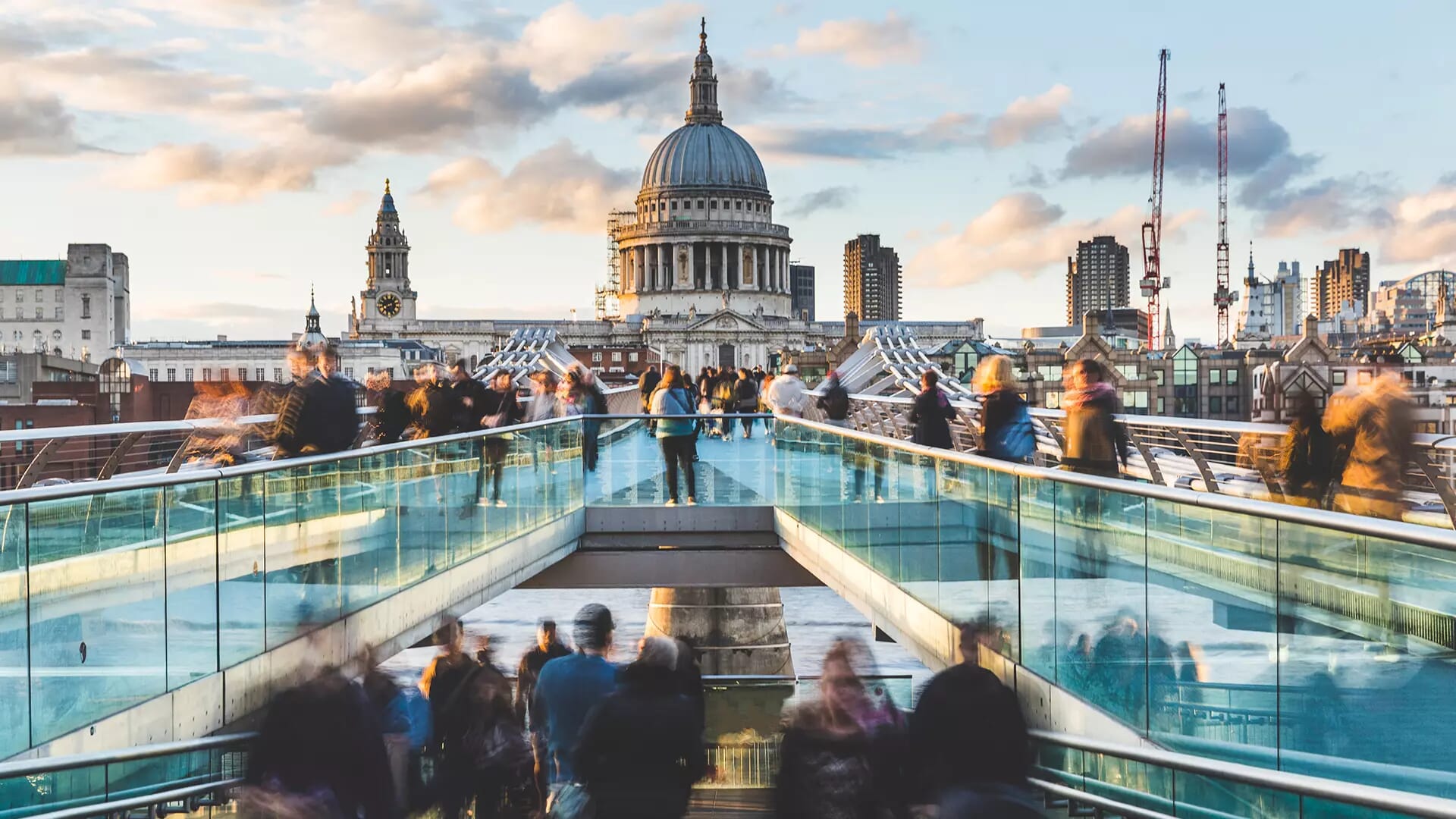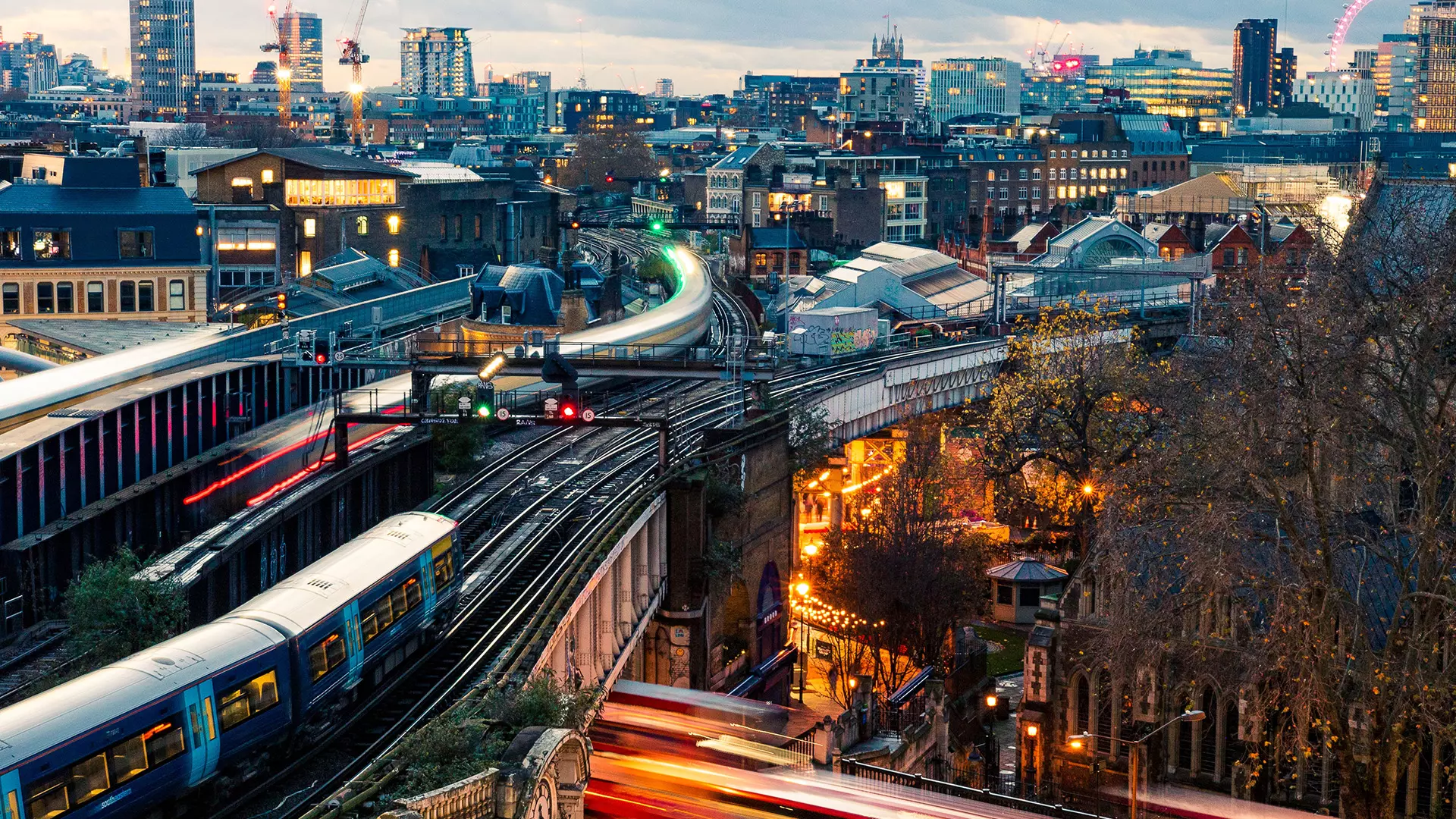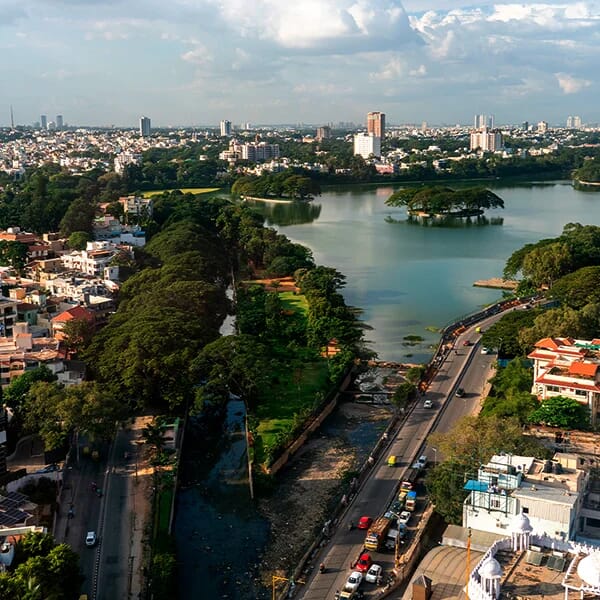 Credit: williamperugini | envato
Credit: williamperugini | envatoNicola Mathers: London’s changing cityscape
CEO of Future of London, Nicola Mathers, discusses collaboration between public and private realms in designing the future London.
April 12, 2024Real Estate
Written by Helen Richards
London is the top global financial centre and a cultural, gastronomical, and transportation hub, with a history that spans nearly two millennia, yet challenges persist in the form of affordable housing, accessibility, pollution, infrastructure strain, and climate change adaptation. Meanwhile, the real estate sector faces mounting pressure to innovate and effectively address these issues.
Future of London is an independent network supporting housing, planning, regeneration, and infrastructure practitioners across the UK capital. Their members include London boroughs, the GLA (Greater London Authority), TfL (Transport for London), development corporations, housing associations, and a number of other private sector partners bringing both investment and insight.
CEO, Nicola Mathers, sat down with the GRI Club content team ahead of her participation as co-chair on the Reincarnation discussion session at the upcoming GRI RE Distress & Financing Opportunities Forum, to discuss the changing cityscape of London as well as collaboration between the private and public sector in solving the pressing issues facing the capital.
One of the big mayoral priorities is affordable housing. London desperately needs more and better affordable housing, but it’s also one of the biggest challenges to deliver on due to the economic climate.
Solutions will come from creative collaboration between the public and private sectors. Through our work - Affordable housing: Overcoming crisis through collaboration - we know the key opportunities are around innovative collaborative finance models. We must make the most of the homes we already have, and better understand community needs to deliver the homes people need today and in the future.
We’re seeing more tall buildings on the skyline. If we want to deliver a net zero London, we need to be building densely around transport hubs, and we're seeing that happening. However, they have to be good quality and well maintained, with enough accessible public space to support both Londoners’ wellbeing and climate resilience.
We are also seeing a real focus on the importance of green space. At a recent Future of London event at Kew Gardens on nature in cities, Cllr Deirdre Costigan, Deputy Leader of Ealing Council and Cabinet Member for Climate Action, shared their ambition to build ten new parks, which is incredible. Creating a network of green spaces is key for both people and nature. Ealing are linking their spaces to encourage walking and cycling, and also greening their highways.
The value of stewardship is also rising up the agenda. The recently published Great Estates: Models for modern placemaking celebrates the achievements of both the original and newer parts of London in continuous ownership.
King's Cross is one of the newer kids on the block. It’s a great example of a mixed use development that has a broad offer across housing, employment, education, culture and leisure, with investment in quality materials.

To unlock this we need to improve communication between developers and local
authorities to better understand local needs, markets, and viability issues, as well as how a clearer offer of later-living and intergenerational housing can provide societal and economic value, such as combating isolation and reducing health and care costs.
At the other end of the spectrum, our members are really concerned that we are losing our young people because the capital has become so unaffordable. It’s critical we tackle this. A diverse skilled workforce is one of the reasons London retains its status as a global city and attractive to investors.
There is also the issue of diversity. London is now 46% non-white, but this demographic is woefully underrepresented in our sector. We’re missing out on much needed talent that brings different perspectives and connects us to our ultimate clients - citizens.
We also need to be better at understanding what our diverse communities need and want, so that we deliver on their aspirations. Successful places are those that people love.
We know resilient cities provide safe, healthy and sustainable places in which communities and businesses can thrive in the long term. We also know there is a significant justice element to this; lower income communities living in poorer streets, housing and public spaces are more vulnerable.
This year our major research and best practice project is Climate Resilience and Equity. There is competition between retrofit versus redevelopment, green skills, open space, infrastructure dependencies, health and wellbeing, and cost of living, to name a few.
However, to what extent is diversity, equality and inclusion seen as a fundamental part in addressing these challenges? Over the next year we’ll be seeking to understand how a focus on EDI in climate resilience topics will deliver better outcomes for all.
Social value is a term used a lot but still misunderstood. We’re coming to the end of a 12-month project - Unlocking Social Value - that looks at what’s being delivered and if it’s any good. The key finding comes back to that issue of longevity. To deliver meaningful community benefits, you must respond to local needs, and that means asking people! We need to focus on creating results for the long term.

Successful partnerships are built on organisations being really honest about how they want to work together, what the ultimate end game is, what skills they both bring to the partnership, what is not acceptable, and where they won’t negotiate, but also coming into it with a degree of flexibility.
My ask on behalf of the boroughs is to appreciate that the public sector is under a huge amount of pressure due to the long term effects of Covid-19, the cost of living and affordable housing crisis, and diminishing resources. An understanding of that and an offer to help is always very welcome.
The community knows exactly what they need and what they want, but historically are involved too late in the process to have meaningful input. Regeneration projects, which are so disruptive to people’s lives, can be seen not to benefit local people. This fuels the mistrust in the real estate industry. We need to put more resources into really listening to communities and then delivering on what they need.
London is one of the greenest cities in the world. Against the pressure to build more, we need to grow on that. Imagine a London awash with parks, green walls, and water. Who wouldn’t want that?
Join Nicola at the GRI RE Distress & Financing Opportunities Forum on April 17 in London to discuss exactly these matters with leading real estate market decision-makers.

London is the top global financial centre and a cultural, gastronomical, and transportation hub, with a history that spans nearly two millennia, yet challenges persist in the form of affordable housing, accessibility, pollution, infrastructure strain, and climate change adaptation. Meanwhile, the real estate sector faces mounting pressure to innovate and effectively address these issues.
Future of London is an independent network supporting housing, planning, regeneration, and infrastructure practitioners across the UK capital. Their members include London boroughs, the GLA (Greater London Authority), TfL (Transport for London), development corporations, housing associations, and a number of other private sector partners bringing both investment and insight.
CEO, Nicola Mathers, sat down with the GRI Club content team ahead of her participation as co-chair on the Reincarnation discussion session at the upcoming GRI RE Distress & Financing Opportunities Forum, to discuss the changing cityscape of London as well as collaboration between the private and public sector in solving the pressing issues facing the capital.
How is the cityscape of London changing?
The combination of regeneration, placemaking, and planning are directing the way that the London skyline is changing, and the way that the city will be delivered going forward.One of the big mayoral priorities is affordable housing. London desperately needs more and better affordable housing, but it’s also one of the biggest challenges to deliver on due to the economic climate.
Solutions will come from creative collaboration between the public and private sectors. Through our work - Affordable housing: Overcoming crisis through collaboration - we know the key opportunities are around innovative collaborative finance models. We must make the most of the homes we already have, and better understand community needs to deliver the homes people need today and in the future.
We’re seeing more tall buildings on the skyline. If we want to deliver a net zero London, we need to be building densely around transport hubs, and we're seeing that happening. However, they have to be good quality and well maintained, with enough accessible public space to support both Londoners’ wellbeing and climate resilience.
We are also seeing a real focus on the importance of green space. At a recent Future of London event at Kew Gardens on nature in cities, Cllr Deirdre Costigan, Deputy Leader of Ealing Council and Cabinet Member for Climate Action, shared their ambition to build ten new parks, which is incredible. Creating a network of green spaces is key for both people and nature. Ealing are linking their spaces to encourage walking and cycling, and also greening their highways.
The value of stewardship is also rising up the agenda. The recently published Great Estates: Models for modern placemaking celebrates the achievements of both the original and newer parts of London in continuous ownership.
King's Cross is one of the newer kids on the block. It’s a great example of a mixed use development that has a broad offer across housing, employment, education, culture and leisure, with investment in quality materials.

“Social value is a term used a lot but still misunderstood.” (Credit: Mint_Images | envato)
Are there demographic changes in London that are moulding the future of the cityscape?
London's ageing population is its fastest growing demographic. Ageing Cities is a study we undertook a few years ago that challenged the perception that older people want to move out of the capital. In fact, it was quite the opposite. Most older people wanted to stay in their neighbourhood and access all that London has to offer. But when it comes to downsizing, choice is extremely limited, blocking much needed family homes coming onto the market.To unlock this we need to improve communication between developers and local
authorities to better understand local needs, markets, and viability issues, as well as how a clearer offer of later-living and intergenerational housing can provide societal and economic value, such as combating isolation and reducing health and care costs.
At the other end of the spectrum, our members are really concerned that we are losing our young people because the capital has become so unaffordable. It’s critical we tackle this. A diverse skilled workforce is one of the reasons London retains its status as a global city and attractive to investors.
There is also the issue of diversity. London is now 46% non-white, but this demographic is woefully underrepresented in our sector. We’re missing out on much needed talent that brings different perspectives and connects us to our ultimate clients - citizens.
We also need to be better at understanding what our diverse communities need and want, so that we deliver on their aspirations. Successful places are those that people love.
What is your outlook on ESG challenges for real estate in London?
We must ramp up our efforts to meet our net zero targets but there are big challenges ahead. How do you fund retrofit? How do we address the huge green skills gaps and improve our supply chain? We need a consistent planning policy so investors can be confident that the solutions they’re putting money into are for the long term.We know resilient cities provide safe, healthy and sustainable places in which communities and businesses can thrive in the long term. We also know there is a significant justice element to this; lower income communities living in poorer streets, housing and public spaces are more vulnerable.
This year our major research and best practice project is Climate Resilience and Equity. There is competition between retrofit versus redevelopment, green skills, open space, infrastructure dependencies, health and wellbeing, and cost of living, to name a few.
However, to what extent is diversity, equality and inclusion seen as a fundamental part in addressing these challenges? Over the next year we’ll be seeking to understand how a focus on EDI in climate resilience topics will deliver better outcomes for all.
Social value is a term used a lot but still misunderstood. We’re coming to the end of a 12-month project - Unlocking Social Value - that looks at what’s being delivered and if it’s any good. The key finding comes back to that issue of longevity. To deliver meaningful community benefits, you must respond to local needs, and that means asking people! We need to focus on creating results for the long term.

“Regeneration projects, which are so disruptive to people’s lives, can be seen not to benefit local people. This fuels the mistrust in the real estate industry.”
(Credit: wirestock | envato)
(Credit: wirestock | envato)
Do you see cooperation from the private real estate sector in this vision?
Yes. The real estate sector can provide much needed investment and skills to deliver. In return, councils need to have a clear vision, strong leadership and an understanding of what their borough needs. Both partners need to be clear about their red lines and acknowledge that any relationship is going to have bumps along the way. The context in which we’re working is constantly evolving and both sides need to be able to adapt.Successful partnerships are built on organisations being really honest about how they want to work together, what the ultimate end game is, what skills they both bring to the partnership, what is not acceptable, and where they won’t negotiate, but also coming into it with a degree of flexibility.
My ask on behalf of the boroughs is to appreciate that the public sector is under a huge amount of pressure due to the long term effects of Covid-19, the cost of living and affordable housing crisis, and diminishing resources. An understanding of that and an offer to help is always very welcome.
Regarding the social aspect, how would the ideal collaboration between the community, the authorities, Future of London, and the real estate sector work?
The final output from our Unlocking Social Value programme will be a network map. This will set out what the private sector can offer, what the public sector can offer, and what the community sector can offer, but also what each of these needs from one another.The community knows exactly what they need and what they want, but historically are involved too late in the process to have meaningful input. Regeneration projects, which are so disruptive to people’s lives, can be seen not to benefit local people. This fuels the mistrust in the real estate industry. We need to put more resources into really listening to communities and then delivering on what they need.
How do you see London in 30 years?
I would love to see a greener city. The benefits of greening are critical to the future of the capital, to keep it cooler, to reduce flooding, to combat pollution, and to support health and wellbeing.London is one of the greenest cities in the world. Against the pressure to build more, we need to grow on that. Imagine a London awash with parks, green walls, and water. Who wouldn’t want that?
Join Nicola at the GRI RE Distress & Financing Opportunities Forum on April 17 in London to discuss exactly these matters with leading real estate market decision-makers.




